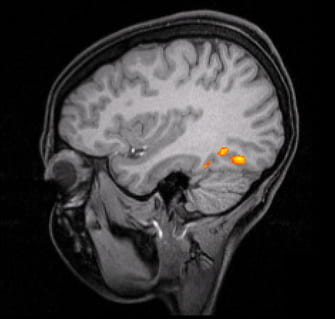In the area of Systems Neuroscience, laboratories are investigating how intrinsic, experience-dependent and fundamental synaptic properties of individual neurons combine into functional circuits in order to give rise to highly tuned receptive fields in sensory domains, or in the production of specific behaviors. In Cognitive Neuroscience, training faculty are studying how brain circuitry functions to give rise to complex processes such as perception, memory, emotions, social communication, creativity, and language.

The USC Neuroscience Graduate Program encourages the combination of diverse approaches to understanding neural functions, crossing both disciplines and levels of analysis. Many labs transcend genetic, cellular, systems and cognitive approaches, as well as incorporating analyses and modeling techniques drawn from computational neuroscience. For example, work on language emphasizes psychological, linguistic, and computational approaches to the study of language acquisition, comprehension, production, and pathology. Likewise, research on learning and memory ranges from the role of synaptic plasticity in defining alterations in the functional operation of neural circuits to information processing across circuits to explain declarative memory and habit learning. Research in social communication emphasizes the role heritable factors (genes) and experiences in influencing the maturation of interactions in animal models and humans. In addition, systems and cognitive researchers working in basic science labs explore the implications of their work for understanding brain disorders and diseases that afflict children and adults.
USC has a number of particularly active research groups. Visual Neuroscience includes approximately 15 different labs representing virtually all aspects of visual information processing, including phototransduction, visual processing from retinal to cortical levels, visuomotor integration, visual cognition, and computer vision. The host of techniques used to answer questions about visual processing is commensurately broad and includes molecular biology, neurophysiology, neuroanatomy, neuroimaging, psychophysics, and computational modeling. The Dana and David Dornsife Cognitive Neuroscience Imaging Center features a 3 Tesla Siemens MAGNETOM Trio scanner for neuroimaging studies of visual and cognitive functions in humans. The underlying systems and factors that influence decision-making and reward and motivation under a variety of conditions are studied through collaborations among neuroeconomists, cognitive neuroscientists and human neuroimaging researchers. The new USC Neuroimaging and Informatics Institute will have a combination of scanning platforms to perform structural and functional imaging studies on typical subjects and those with defined brain disorders and diseases.
An important strength of USC is in bringing together experimental and computational scientists in order to enhance merging theory and experiment. USC offers exceptional opportunities for students to gain exposure to both approaches, so as to provide multiple ways of thinking about their research. Joint lab meetings and active journal clubs also contribute to vibrant cross-disciplinary discussion between cellular, systems, cognitive, and computational researchers.
Faculty Members
Carolina Abdala
Lisa Sarah Aziz-Zadeh
Laura A. Baker
Theodore W. Berger
Irving Biederman
Sarah W. Bottjer
Nina S. Bradley
Giorgio Coricelli
Antonio Damasio
Hanna Damasio
Laurie S. Eisenberg
James M Finley
Megan M. Herting
Judith A. Hirsch
Daniel P Holschneider
Mary Helen Immordino-Yang
Scott E. Kanoski
Jason J Kutch
Pat Levitt
Emily R. Liman
Gerald E. Loeb
Frank Manis
Mara Mather
Bartlett W. Mel
Toben H. Mintz
John R Monterosso
Nicolas Schweighofer
Jean C. Shih
Larry Swanson
Alan G. Watts
Carolee J. Winstein
Ruth I. Wood
Li I Zhang